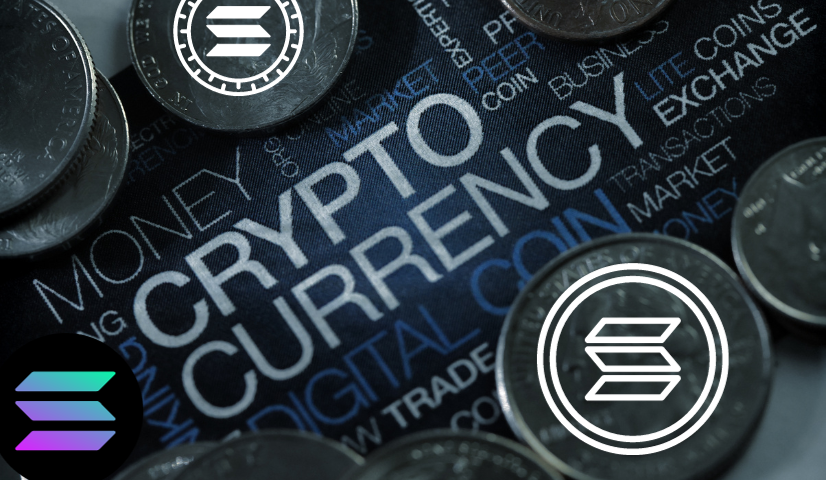
KEYTAKEAWAYS
-
Bitcoin has evolved as 'digital gold', Ethereum revolutionized blockchain with smart contracts, and Solana emerged as a high-performance platform, each influenced by unique market factors.
-
Regulatory changes, technological advancements, and global economic conditions significantly impact the prices and adoption of these cryptocurrencies.
-
Despite volatility and challenges, the crypto market exhibits potential for growth, highlighting the importance of informed research and strategic investment decisions for new entrants.

CONTENT
CURRENT CRYPTO TREND
Since the cryptocurrency was launched, it has gradually attracted board-level public attention. No matter whether people are speculative investors or genuinely indulged in this ground-breaking realm, it is undeniable that they are increasingly seeing these digital assets as investment tools rather than technological breakthroughs.
The timeline below provides readers with a brief view of cryptos’ development until 2023. The significant return on investment explains why cryptos have become popular among investors, even if it means higher loss risks.
2009 – 2012: The Early Days
- 2009: Bitcoin’s inception by an individual or group under the pseudonym Satoshi Nakamoto. Initially, it had little to no monetary value.
- 2010: Bitcoin begins trading; the first real-world transaction occurs when 10,000 BTC is used to buy two pizzas.
2013 – 2014: Rising Popularity and Initial Peaks
- 2013: Bitcoin first reaches $1,000, driven by increased media attention and growing adoption.
- 2014: The Mt. Gox exchange hack severely impacts Bitcoin’s value.
2015 – 2016: Recovery and Steady Growth
- Cryptocurrencies start to recover. Newer coins like Ethereum (introduced in 2015) have begun gaining attention for enabling smart contracts.
2017: The First Major Bull Run
- 2017: A significant bull run; Bitcoin peaks at around $20,000 in December. The rise is driven by retail speculation and the ICO (Initial Coin Offering) boom.
- Late 2017: Introduction of Bitcoin futures trading.
2018: The Crypto Winter
- A sharp market downturn, with bitcoin falling below $4,000. Factors include regulatory scrutiny and market fatigue.
2019 – 2020: Gradual Recovery and Pandemic Influence
- The market is slowly recovering. The COVID-19 pandemic towards the end of this period prompted increased interest in digital currencies as a potential hedge against traditional financial systems.
2021: Record Highs and Mainstream Adoption
- 2021: Bitcoin reaches over $60,000. Factors include institutional adoption by significant corporations, adoption by payment platforms like PayPal, and broader financial interest in cryptocurrencies.
- Altcoins like Ethereum also see substantial gains.
2022 – Early 2023: Volatility and Maturation
- The market experiences volatility amidst global economic uncertainty, regulatory news, and growing technological advancements in the crypto space.
- Growing interest in NFTs (Non-Fungible Tokens) and DeFi (Decentralized Finance).
Although the prospect of cryptos is overshadowed by a series of scandals, including the Luna crash and FTX bankruptcy, the recent string of positive news of digital assets, like the optimistic developments in legal matters regarding the bitcoin ETF case, as the US court said SEC wrong to deny Garyscale’s bitcoin ETF proposal, and Paypal got the license to provide crypto services in the UK, may imply the sign of the approaching of a bullish market again. In the following sections, we will dive into what you need to know if you are a beginner who has just joined the crypto market.
3 MAJOR CRYPTO INTRODUCTIONS AND KEY PRICING FACTORS
Suppose you are a newbie in the crypto realm. In that case, CoinRank has compiled three cryptos worth paying attention to with detailed timelines so readers can better understand if you are considering investing in cryptos.
1. Bitcoin

Launched in 2009 by an unknown entity named Satoshi Nakamoto, Bitcoin is a groundbreaking cryptocurrency. It operates on a decentralized blockchain, enabling peer-to-peer transactions without the need for traditional financial intermediaries. Known for its independence from central banks, Bitcoin offers a new level of financial freedom and privacy. It’s not just a currency; it’s also seen as a digital gold for investment, particularly during economic uncertainties. Bitcoin facilitates cheaper, faster cross-border transfers and is especially useful in countries with unstable currencies or restricted financial systems. Despite its volatility and regulatory challenges, Bitcoin remains a crucial player in the digital currency space.
2009 – 2012: Early Development
- Bitcoin was worth virtually nothing in its early years. Interest was mainly limited to cryptographers and tech enthusiasts. It began being traded on exchanges around 2010.
2013: First Major Peak
- April 2013: Bitcoin’s price surpassed $100 for the first time.
- November 2013: The price spiked to over $1,000. This surge was driven by growing awareness of Bitcoin and increasing acceptance among merchants.
2014 – 2015: Mt. Gox and Market Correction
- 2014: The collapse of Mt. Gox, one of the largest Bitcoin exchanges, and regulatory pressures from various countries led to a significant price drop.
2016 – 2017: Bull Run and All-Time Highs
- 2017: Bitcoin’s price soared, reaching nearly $20,000 in December. This rally was fueled by increased interest from retail and institutional investors, media hype, and the ICO (Initial Coin Offering) craze.
2018: Crypto Winter
- Throughout 2018, Bitcoin’s price plummeted, dropping below $4,000. The burst of the 2017 bubble, regulatory crackdowns, and security concerns contributed to the decline.
2019 – 2020: Recovery and Growth
- 2019-2020: Bitcoin gradually recovered, driven by institutional interest, political uncertainties, and the perception of Bitcoin as a “digital gold” and a hedge against inflation.
2021: New Peaks and Volatility
- Early 2021: Bitcoin reached new heights, surpassing $60,000. Factors included institutional investment from companies like Tesla, PayPal’s integration of Bitcoin, and increased interest in digital currencies during the COVID-19 pandemic.
- Mid to Late 2021: The price saw significant fluctuations due to factors like China’s crackdown on cryptocurrency activities, concerns about environmental impact, and regulatory news from the US and other countries.
2022 – Early 2023: Continued Volatility
- This period was marked by continued volatility, with movements influenced by global economic conditions, regulatory news, the influence of social media and prominent figures, and developments in blockchain and cryptocurrency technology.
Key Factors Influencing Bitcoin’s Price
- Regulatory News: Announcements from major countries about cryptocurrency regulation often impact the price.
- Institutional Adoption: Decisions by significant companies to invest in or adopt Bitcoin can drive price changes.
- Economic Factors: Global economic events, like inflation rates and changes in monetary policy, can affect Bitcoin’s attractiveness as an investment.
- Technological Developments: Upgrades to the Bitcoin network and broader tech trends can impact investor sentiment.
- Market Sentiment: Media coverage, public sentiment, and actions of influential figures can cause rapid price movements.
2. Ethereum

Debuted in 2015 by Vitalik Buterin and co-founders, Ethereum is a primary cryptocurrency, second in market capitalization only to Bitcoin. It revolutionized blockchain technology by introducing programmable smart contracts, enabling the creation of decentralized apps (dApps). Ethereum is foundational to the decentralized finance (DeFi) sector and the Non-Fungible Token (NFT) market. It’s transitioning to Ethereum 2.0, adopting a proof-of-stake mechanism for better sustainability and scalability. Ethereum continues to be a vital force in the evolution of blockchain and decentralized applications.
2015: Launch
- Ethereum launched in 2015. Initially priced around $1, it was seen as an innovative platform due to its smart contract capabilities.
2016: Steady Growth
- The DAO (Decentralized Autonomous Organization) project raised a significant amount of Ether, boosting its price. However, a DAO hack caused a split in the network, forming Ethereum (ETH) and Ethereum Classic (ETC).
2017: First Major Surge
- Ethereum’s price surged, reaching up to $800 by the end of the year. It was primarily driven by the ICO (Initial Coin Offering) boom, where many new Ethereum platform projects increased demand for Ether.
2018: Peak and Decline
- In January, ETH reached its then all-time high of around $1,400, following the late 2017 crypto market bull run.
- Subsequently, like other cryptocurrencies, it faced a significant drop, falling below $200 by the end of 2018, affected by regulatory concerns and a general market downturn.
2019 – 2020: Recovery and Growth
- The price recovered slowly, influenced by the overall recovery of the crypto market and growing interest in DeFi (Decentralized Finance), primarily built on Ethereum’s network.
2021: New Highs
- ETH prices soared, reaching new highs above $4,000. Drivers included the growing DeFi sector, increased interest in NFTs (mostly Ethereum-based), and anticipation of Ethereum 2.0 upgrades for improved scalability and sustainability.
2022 – Early 2023: Volatility and Transition
- The market saw volatility with price swings influenced by broader economic factors, regulatory news, and developments in the Ethereum 2.0 transition, including the move from proof-of-work to a proof-of-stake consensus mechanism.
Key Factors Influencing Ethereum’s Price
- DeFi and NFT Growth: As the primary platform for these sectors, growth in DeFi and NFTs directly impacts Ethereum’s demand.
- Network Upgrades (Ethereum 2.0): Upgrades aimed at improving scalability, efficiency, and sustainability affect investor sentiment.
- Market Trends and Investor Sentiment: Like other cryptocurrencies, Ethereum is influenced by broader market trends, regulatory news, and global economic factors.
- Technological Developments: Innovations and competition from other blockchain platforms can also impact Ethereum’s price.
3. Solana

Solana is a high-performance blockchain known for its speed and efficiency, making waves in cryptocurrency. It supports decentralized app (dApp) development with high throughput and low transaction costs. Its unique hybrid consensus model, combining proof-of-history (PoH) and proof-of-stake (PoS), enables fast transaction processing. Solana is popular for DeFi applications and NFTs, hosting projects like Serum (a decentralized exchange) and Audius (a blockchain-based music service). Its combination of speed, efficiency, and cost-effectiveness makes Solana a formidable player in the future of decentralized applications.
2020: Launch and Initial Growth
- Solana’s mainnet beta launched in March 2020. Initially, the price of Solana (SOL) was relatively low, trading below $1.
- Interest in Solana began to grow due to its high throughput and low transaction costs, appealing to developers and investors in the DeFi and dApp space.
2021: Significant Surge
SOL experienced significant growth in 2021, with its price reaching new highs. Several factors contributed to this surge:
- Growing DeFi and NFT Ecosystem: Solana’s support for DeFi projects and NFT marketplaces increased its popularity.
- Technical Performance: Its high transaction speed and low cost, compared to Ethereum, attracted users and developers.
- Strategic Partnerships and Projects: Collaborations with various organizations and launching successful projects on its platform bolstered confidence in its ecosystem.
Late 2021 – Early 2023: Volatility and Market Trends
- Like other cryptocurrencies, Solana’s price saw volatility. General market trends, including investor sentiment, regulatory news, and global economic factors, influenced the price.
- Despite its technological strengths, Solana faced challenges, including network outages and performance issues, impacting investor confidence.
Key Factors Influencing Solana’s Price
- Network Performance and Reliability: Solana’s ability to maintain a high-performance network without outages is crucial.
- Adoption in DeFi and NFT Spaces: As a platform supporting these applications, growth in these sectors positively impacts Solana.
- Competitive Landscape: Developments in competing blockchains, especially around DeFi and NFTs, can influence Solana’s market position.
- Broader Crypto Market Trends: Overall market sentiment, regulatory developments, and macroeconomic factors affect Solana, like other cryptocurrencies.
JOIN THE CRYPTO MARKET WITH COINW EXCLUSIVE BENEFITS
From the price trends shown above, upturns can be observed in all three introduced coins. As the article mentioned initially, the ascending trend can be attributed to current good news in the crypto market. Investors or prospective investors can take the chance and spend some time collecting relative information and doing their own research to decide the best investment timing.
Also, suppose you have yet to decide which exchange or are planning to try another platform. In that case, CoinRank is now collaborating with CoinW to provide exclusive rewards to new registers, as shown below.
1. New User Exclusive
- 5 USDT cashback for each newly registered user who tops up over 200 USDT OR whose first spot or futures trading volume exceeds 300 USDT. For valid participation, please register via the exclusive link.
*Only the first 5,000 participants are eligible for the rewards.
2. Trading Bonus
- Every participant enjoys a 10% trading fee rebate.
- New users can receive a maximum of $1,000 cashback and $500 for registered users.
3. Futures Bonus Package
- Extra $30,500 Futures Bonus to those who meet the requirements below
Users can enjoy CoinW’s powerful features and unique benefits at the same time. Detailed tutorials are also available via CoinRank for spot trading and futures trading.
Looking for the latest scoop and cool insights from CoinRank? Hit up our Twitter and stay in the loop with all our fresh stories!
















